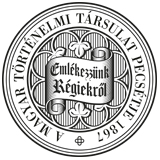Századok – 1997
Tanulmányok - Péter Katalin: Társadalom és gazdálkodás a kora újkori Sárospatakon. A patakiak csendes ellenállása IV/809
856 PÉTER KATALIN 178 Prot. I. 307. 179 Kádasnérói az urbáriumokon kívül már említett végrendelete: Prot. I. 120. 1596. 180 Prot. I. 359. 1688. 181 Antal Istvánt az 1704-es urbárium említi. 182 д pro annuis ós a Diarium residentiae (ld. 61., 85. j.). 183 Ugyancsak a fent elemzett 1704-es urbáriumból származó adatok. 184 Prot. I. 375. 1697. 185 Serer Mihályról és Srajfogel Rozina, majd lányuk ügyleteiről Patakon, időrendben: Prot. III. 140-143., MOL E NRA 1389/17.,Uo. 775/33.,1155/70., Prot. III. 364. MOL E 210. Miscellaneae 114. No. 71. MOE E 147. NRA 1389/17. Katalin Péter SOCIÉTÉ ET ÉCONOMIE À L'ÉPOQUE PRÉMODERNE DE SÁROSPATAK La résistance passive des habitants de Patak (Résumé) On peut bien constater, grâce aux donnés de source très favorables, qu'à Sárospatak au tour des 16-17es siècles ce n'était qu'un fragment de la population qui avait du terrain. Les arpentages fait par les seigneurs (nommés en général urbárium) ont registres ces propriétaires du terrain et c'étaient eux qui devaient supporter les redevances (des serfs), organiser l'engagement des obligations. On a l'habitude de supposer que la population sans terre végétait dans la pauvresse dans l'état de l'assujettissement total. Par contre à Sárospatak éclate que même les habitants les plus riches de la bourgade avaient pu vivre dans les terrains des autres. Eux et des autres habitants sans terre ont réussi d'être libérés de la dépendance personnelle. En sens de l'histoire sociale ce n'était pas une couche homogène, parmi eux étaient des commerçants riches et des veufs vivants dans la maison des autres. Leur caractéristique commune était l'indépendance personnelle et la possession d'un ménage autonome. En plus, hors de ce fait évident, on peut constater que même les propriétaires de terrain voulaient organiser une économie qui ne soit strictement liée au terrain. La plupart des propriétaires entretenait des organisations économiques d'une structure compliquée. Ayant des terrains ils avaient des vignobles en plusieures parcelles et des champs indépendants des terrains. C'était une petite partie des propriétaires qui exploitait uniquement son terrain. И y avait aussi un effort de créer une existence sans dépendance personnelle et du terrain, que montre l'activité croissante de l'artisanat faite par certains habitants de Sárospatak. La base de cette activité était la demande des produits convenables, laquelle demande pour l'industriel apportait une possibilité individuelle. SOCIETY AND ECONOMY AT EARLY MODERN SÁROSPATAK. The Silent Resistance of the Inhabitants by Péter Katalin Summary On the basis of a very abundant source material it can be established that only a small portion of the population of Sárospatak owned plots at the turn of the 16th and 17th centuries. The surveys prepared by landlords, the so-called urbaria, enumerate the plot-owners, since they had to do services as serfs to the landlords or organize the fulfilment of these services. Those who had no plots are generally thought to have been the poorest and totally defenceless. At Sárospatak, however, even some of the wealthiest inhabitants lived on plots owned by others. They and the less well-to-do landless people had managed to get rid of personal subjection to the landlord. They did not form a unified layer of society. Rich merchants and widows living with others were equally among them. They all were independent and had a household of their own. Another interesting feature of the day was that plotowners also tried to organize their agricultural activities outside their plots. Most of them maintained complicated agricultural complexes. They often had vineyards at sevaral places and arable lands also not necessarily belonging to the plot itself. Only a small minority lived exclusively off the plots they owned. Some inhabitants of Patak tried to get rid of personal bondage by becoming artisans. There was a great demand for their products on the one hand, and this kind of activity ensured possibility for individual success for the artisans on the other.
